The Bike Travel Professional’s Guide:
Domestic Japan Edition #01
Hello, I’m Ontama Negitoro.
This time, I’d like to give a brief introduction to domestic bike travel, something that’s essential when participating in cycling events or trips within Japan. Drawing from my experience of cycling both in Japan and abroad, I’ll share some insights on the topic. Bicycles are highly versatile vehicles that can be combined with various modes of transportation like planes, trains, and ferries. By effectively using public transportation, you can reach events and destinations that may have seemed a bit too far to visit!
*As of August 2024
Table of Contents
1. History and Culture of Bike Travel
2. Rules and Conditions for Domestic Bike Travel
2-1. JR (Japan Railways)
2-2. Shinkansen (Bullet Train)
2-3. Private Railways
2-4. Cycle Trains
2-5. Ferries and Boats
In Japan today, it’s possible to travel with your bicycle using a method called “rinko (bike transport).” By removing both wheels and placing the bicycle in a special case known as a “rinko bag,” you can bring it onto various forms of transportation, including local trains, Shinkansen (bullet trains), certain buses, airplanes, and ferries. Interestingly, in many countries abroad, you can often bring your bike onto trains and buses without disassembling it, and rinko bags can be seen as a curiosity.
1. History and Culture of Bike Travel
The practice of “rinko” originally emerged as a way for keirin (professional track cycling) athletes to transport their bikes to race tracks. Later, in the 1970s, after negotiations between the Japan Cycling Association and Japan National Railways, it was agreed that regular cyclists could also bring their bikes on trains, provided they were disassembled and placed in a bag. This marked the beginning of today’s rinko culture.
Unlike in Japan, the culture of using rinko bags doesn’t exist overseas. Depending on the country or the train line, cyclists can often bring their bikes onboard without disassembling them. In Japan, the efforts of those who came before us have paved the way for the rinko system, allowing us to combine bicycles with public transportation seamlessly.
2. Rules and Conditions for Domestic Bike Travel
Next, I will explain the general rules and actual rinko situations for each mode of public transportation, including some of my personal experiences.Please use the following table as a reference.
Detailed explanations will follow.
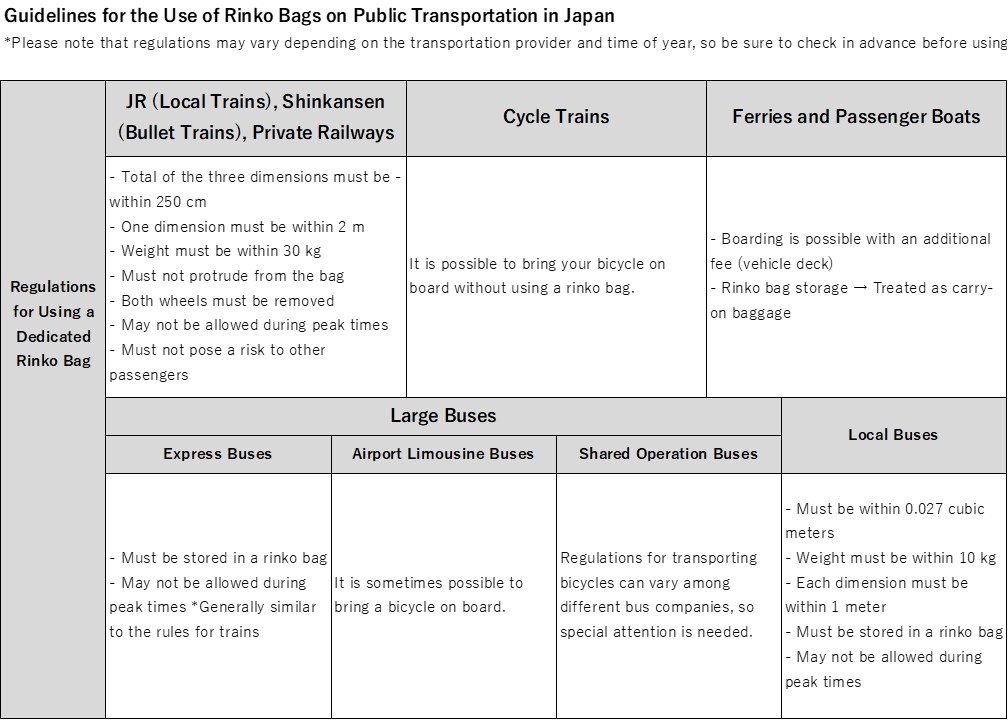
2-1. JR (Japan Railways)
< Regulations for Using a Dedicated Rinko Bag >
– Total of the three dimensions must be within 250 cm
– One dimension must be within 2 m
– Weight must be within 30 kg
– Bicycle must not protrude from the bag
– Both wheels must be removed
– May not be allowed during peak times
– Must not pose a risk to other passengers
Generally, there are no significant differences in regulations among JR lines, Shinkansen, and private railways. As long as you adhere to the above guidelines, transporting a bicycle by train within Japan should not be problematic.
< Bike Travel on JR (Local Trains) >
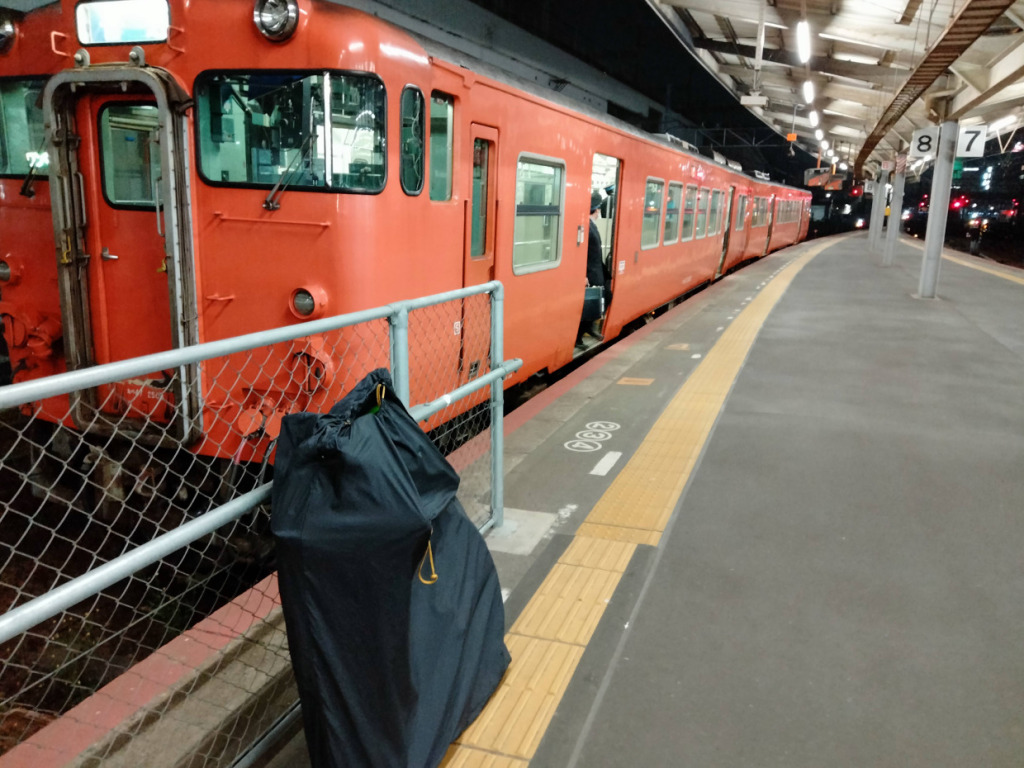
First, let’s summarize the Q&A and guidelines regarding bringing bicycles on board from various JR companies:
– JR Hokkaido: “Frequently Asked Questions”
– JR East: “Can I bring large items like a bicycle on the train?”
– JR Central: “Ticket Rules”
– JR West: “Ticket Rules”
– JR Shikoku: “Bringing Bicycles on Trains”
– JR Kyushu: “Ticket Rules”
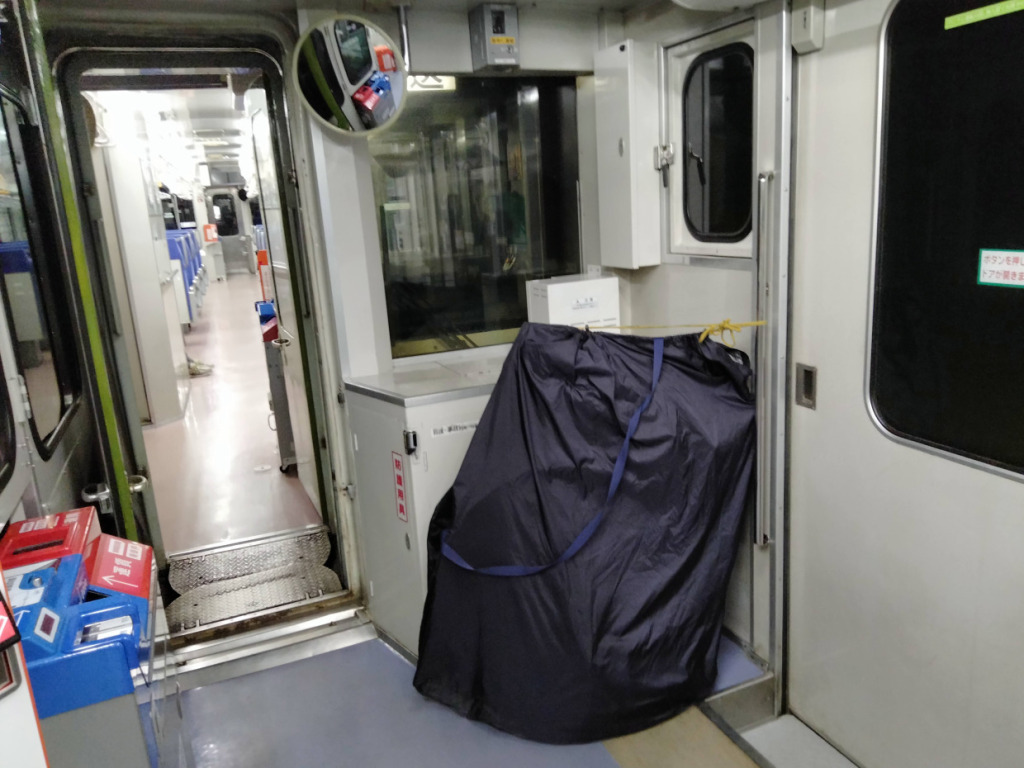
On local train lines, it’s common for only certain doors to open at each station. To save yourself the hassle of moving your bike inside the train, check in advance which door will open at your destination.
JR is likely the most commonly used railway company for bike travel in Japan. Once you’ve mastered the process with JR, you can confidently expand your bike travel experiences to other private railways and subways.
2-2. Shinkansen (Bullet Train)
< Regulations for Using a Dedicated Rinko Bag >
The rules for bringing a bicycle on board are generally the same as those for JR lines.
< Bike Travel on the Shinkansen >
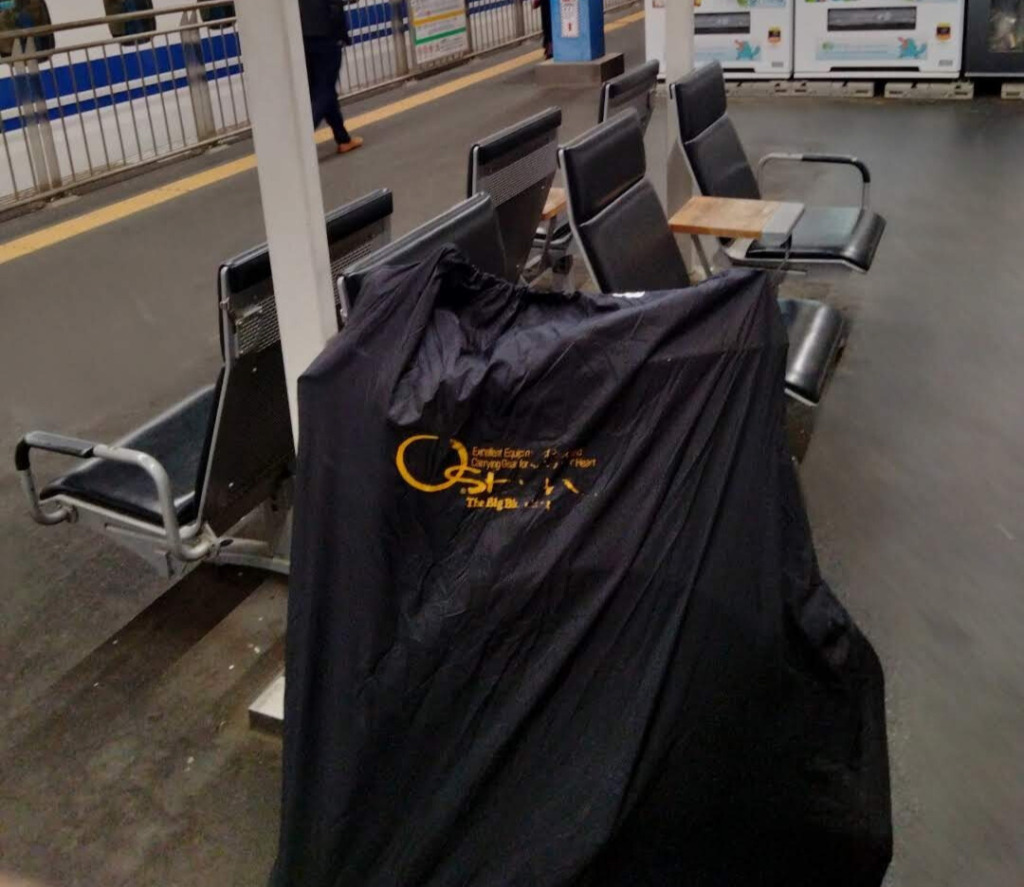
When traveling long distances within Japan, using the Shinkansen for bike travel is very convenient. On Shinkansen lines such as the Hokkaido, Tohoku, and Hokuriku lines, make sure to utilize the space behind the rearmost seats to avoid obstructing other passengers.
However, on the Tokaido, Sanyo, and Kyushu Shinkansen lines, the presence of the “Oversized Luggage Space” rule can make it unclear how bicycles are handled.
– JR Central: “Luggage Rules for Tokaido, Sanyo, and Kyushu Shinkansen”
In conclusion, whether or not you reserve an Oversized Luggage Space when traveling with a bicycle on the Tokaido, Sanyo, or Kyushu Shinkansen, there’s no issue. While reservations are required for luggage exceeding 160 cm in total dimensions, sports equipment is generally exempt from this rule.
When you actually place a bicycle in the oversized luggage space, even with a relatively compact vertical rinko bag, it can still take up the space of about two seats. Because of this, there are situations where you might not be able to fit your bicycle in the oversized luggage space, even if you’ve reserved it. In such cases, it might be necessary to resolve the situation through discussion. Additionally, if the person next to you tries to recline their seat and forcefully lowers it, it could put pressure on your bicycle. Personally, I find that using the oversized luggage space requires being more mindful of those around you.
Because of these potential issues, I consulted with a JR Central conductor, who informed me that it’s permissible to place a bicycle in the wide space near the entrance if needed. However, they also mentioned that it’s important to notify the conductor to confirm the ownership of the bicycle. So, if you have trouble finding a space for your bicycle, it’s a good idea to ask the conductor for assistance.
2-3. Private Railways
< Regulations for Using a Dedicated Rinko Bag >
The rules for bringing a bicycle on board are generally the same as those for JR lines.
< Bike Travel on Private Railways and Subways >
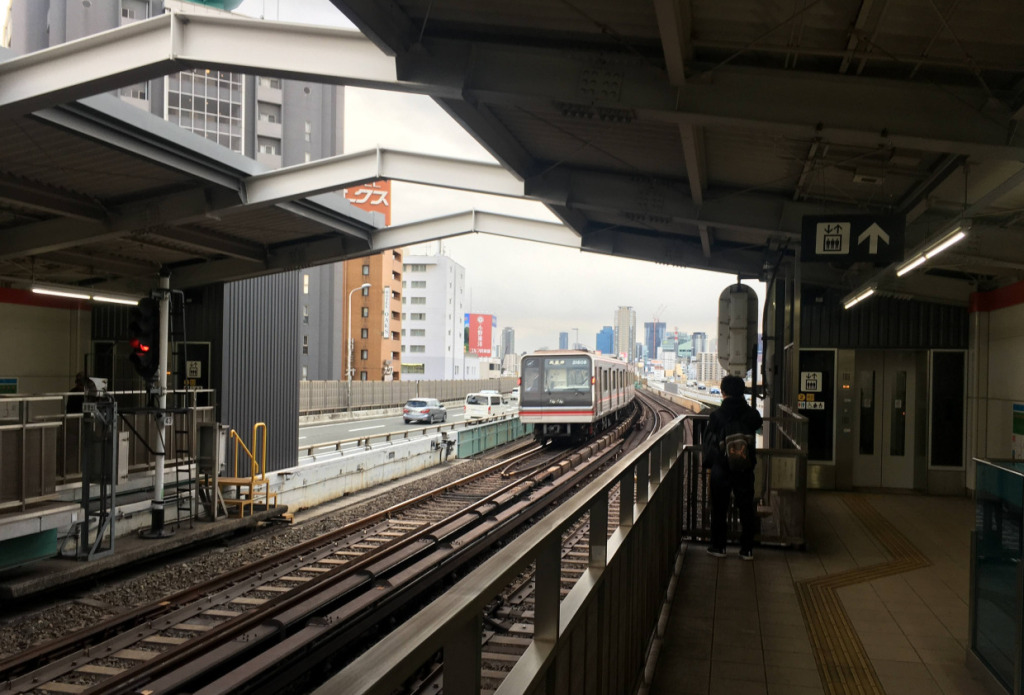
The regulations for bringing a bicycle on board are often the same for private railways and subways as they are for JR lines. Many private railway companies base their policies on JR standards, so it’s important to strictly adhere to JR’s guidelines.
One thing to be cautious of is that private railway and subway lines can become crowded depending on the time of day and the route. It’s best to avoid these crowded times. The recommended times are early in the morning and early afternoon, avoiding rush hours. Be mindful that late at night, especially during the last trains, there can also be crowding, so it’s wise not to travel too late.
2-4. Cycle Trains
On certain specific routes within Japan, whether on JR or private railways, there are services available that allow you to bring your bicycle on board without disassembling it or placing it in a rinko bag, similar to practices in other countries. This service is known as a “Cycle Train.”
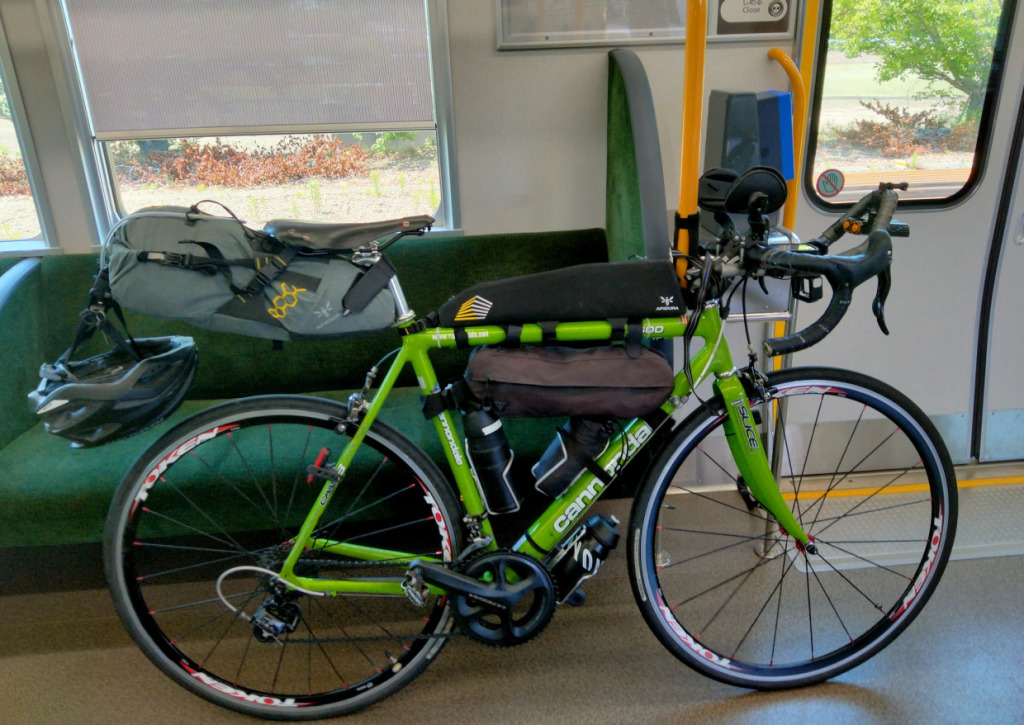
Recently, more local governments have been operating Cycle Trains as a tourism resource. However, these services are often limited by season, day of the week, or time of day. It’s important to thoroughly check the schedule and availability in advance before planning your trip.When using a Cycle Train, keep the following points in mind:
– Secure the handlebars or frame to a pole or similar structure to prevent movement.
– Board the front car.
– Be mindful of your surroundings to avoid contact with the interior of the train or other passengers.
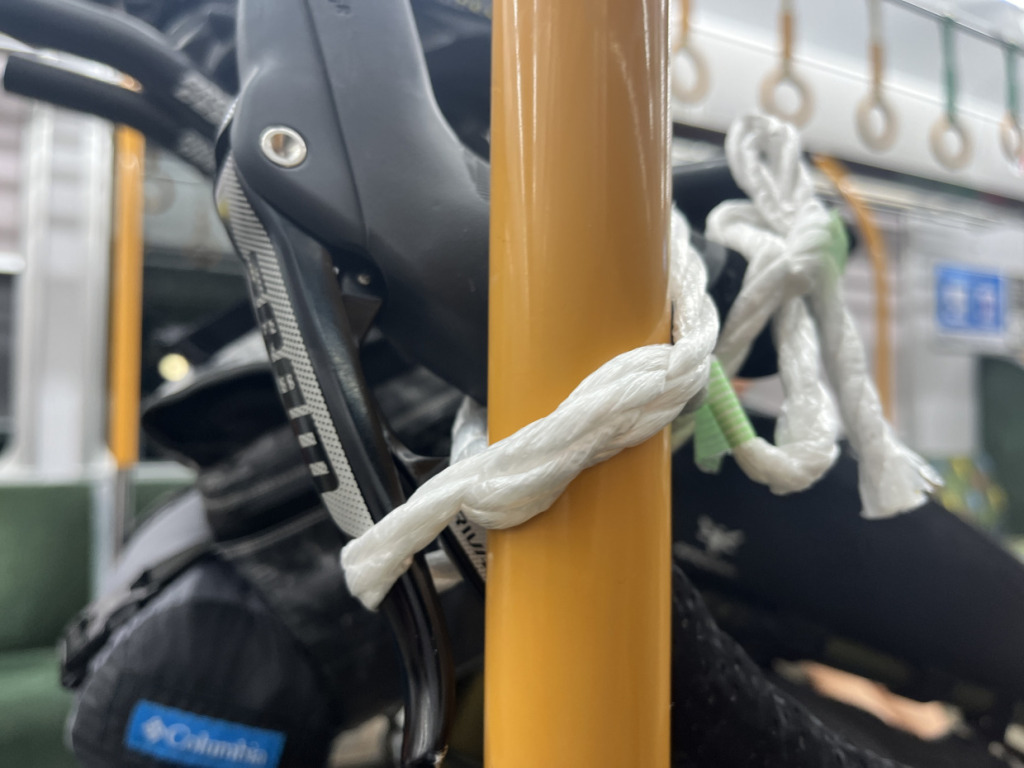
When using a Cycle Train, it’s helpful to prepare two straps: one for securing the bicycle inside the train and another for fastening the brake levers.
Reference:
– JR Odekake Net: Kii Line Cycle Train
2-5. Ferries and Boats
< Regulations for Using a Dedicated Rinko Bag >
– With an additional fee, it is possible to bring the bicycle on board as-is (vehicle deck)
– If stored in a rinko bag, it can also be carried as carry-on luggage
On many ferries, you can pay an additional fee to bring your bicycle on board without using a rinko bag by placing it in the vehicle deck (note that there may be a limit on the number of bicycles, so advance reservation is recommended). Additionally, if you use a rinko bag, it may be possible to carry it as carry-on luggage, providing more options.
< Bike Travel on Ferries and Passenger Boats >
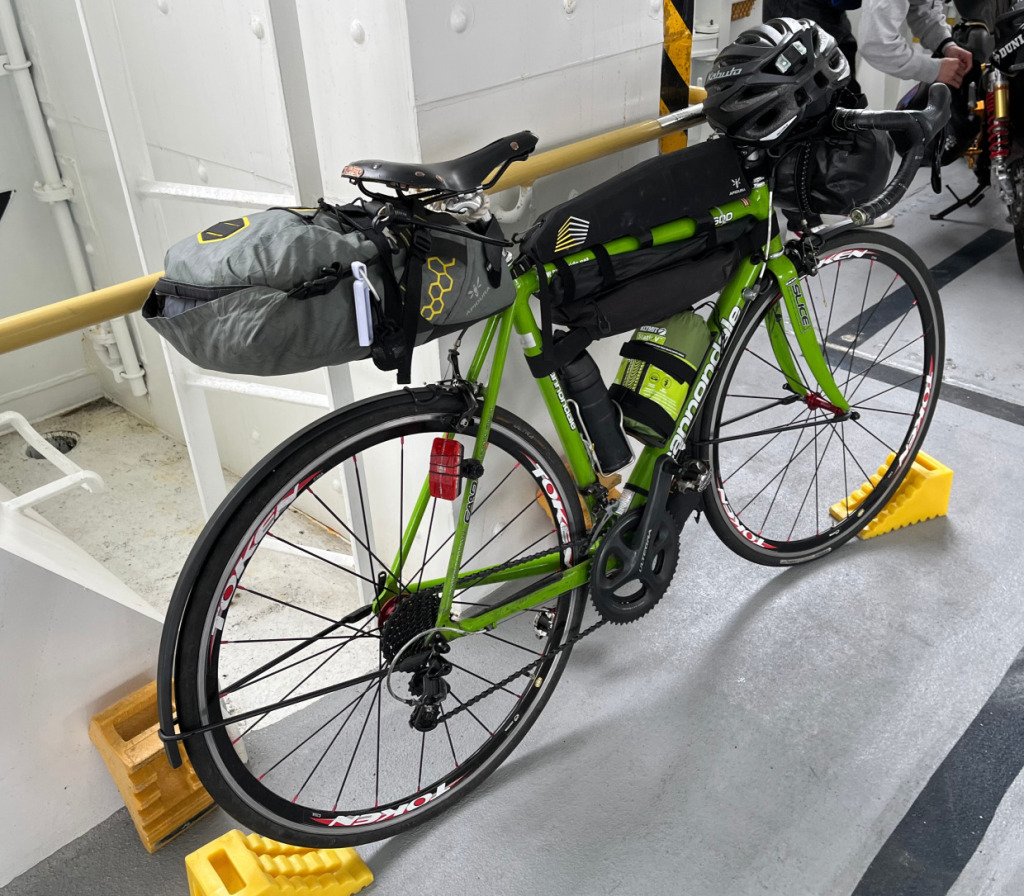
For passenger ships, ferries, and boats, you can often bring your bicycle on board as-is by paying an additional fee to place it in the vehicle deck. Additionally, in some cases, you may be able to carry your bicycle as carry-on luggage if it is stored in a rinko bag.
Check the regulations of the ferry company you plan to use to choose the best method for your needs. Note that when placing your bicycle in the vehicle deck, there may be a limit on the number of bicycles allowed, so it is a good idea to make a reservation in advance.
Reference:
– Mitsui O.S.K. Lines Sunflower Ferries
– Tsugaru Kaikyō Ferry
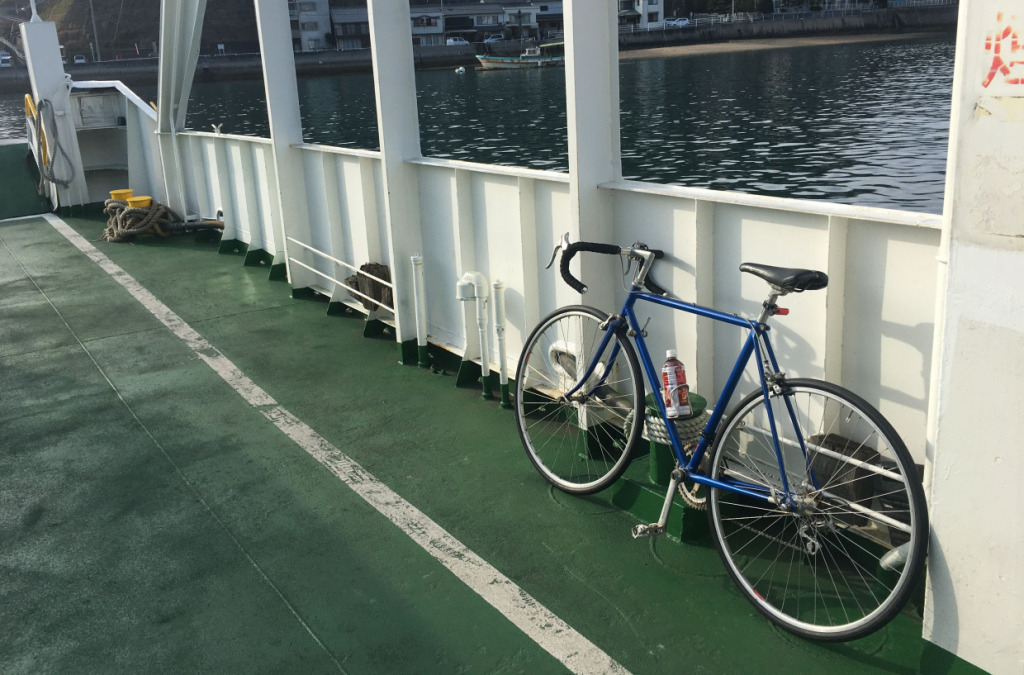
Reference:
Onomichi Machikado Public Relations Office – Station Front Ferry
Next time:
“The Bike Travel Professional’s Guide: Domestic Edition #02“
We will cover key points to consider when using buses for bike travel and provide information on accommodation options.
Text_Ontama Negitoro
🚲Articles by Ontama Negitoro
The Bike Travel Professional’s Guide Series
● Domestic Japan Edition 01
● Domestic Japan Edition 02
Gravel Enthusiasts Ride Ancient Routes
● Kii Mountain Range, Kumano Kodo, Off-Road
● Kumano Sanzan Pilgrimage, Exquisite Tuna, Cycle Train
Riding the 1000km Around Shikoku
● An Ultra-Distance Journey by a Gravel Enthusiast
Why Travel to Cape Soya by Bicycle?
● Welcoming the New Year at Japan’s Northernmost Point
Watch Out for Makibishi (Caltrops) !
● A Short Cycling Trip to the Ninja Village
To Taste Mackerel at Wakasa Bay!
A Parent-Child Ride Along the Saba(Mackerel) Kaido
Profile

Ontama Negitoro
Hailing from Sakai City, Osaka Prefecture, Onsen Tamago Negitoro is a company employee, writer, and the administrator of the blog “Bicycle Travel Research Society.” They have been involved in bike camping tours from a young age, having traversed almost all of Japan’s prefectures. During their university years, they were part of a bicycle club and visited over 10 countries solo by bicycle. With extensive experience in bike travel, they undertook an extreme bike camping tour across Hokkaido during the harsh winter of 2023. Recently, they have focused on long-distance rides, earning the SR title in a brevet in 2023 and completing a 1900km brevet during the 2024 Golden Week. They aim to complete PBP and LEL in the future and are also planning to actively pursue overseas bike camping tours.